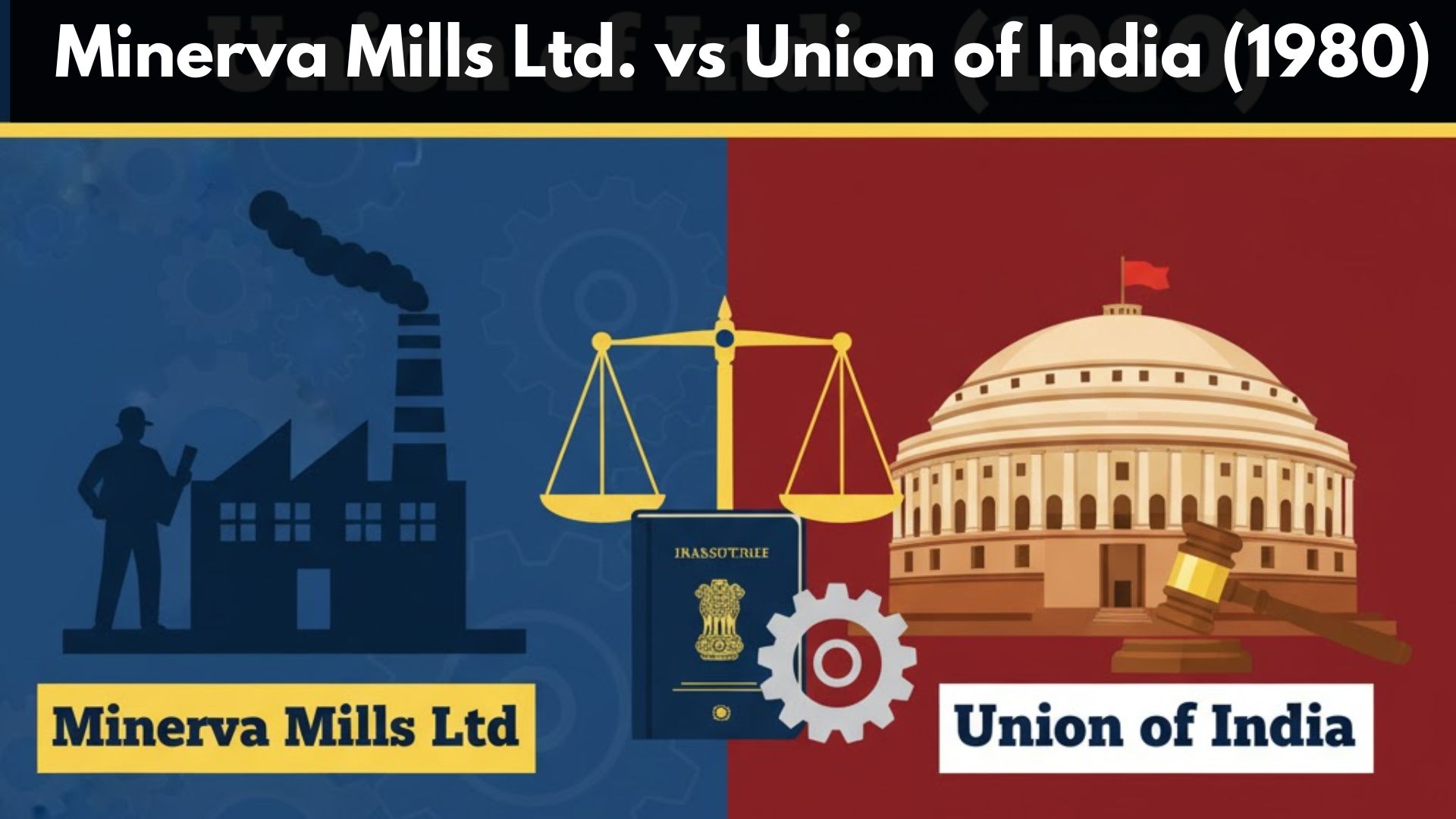
Case Summary – Minerva Mills Ltd. & Ors vs Union of India & Ors (1980)
Date of Decision: 31 July 1980
Court: Supreme Court of India
Bench: Y. V. Chandrachud, C.J.; P. S. Kailasam, J.; P. N. Bhagwati, J.; N. L. Untwalia, J.; A. C. Gupta, J.
Bench Type: Full Bench
Final Decision: Disposed Of
Citations: AIR 1980 SC 1789; (1980) 3 SCC 625; (1980) 2 SCC 591; (1981) 1 SCR 206; (1980) 12 UJ 727
[Judgment Source]
https://www.courtkutchehry.com/Judgement/Search/AdvancedV2?docid=267328
Facts of the Case
Minerva Mills Ltd., a textile undertaking in Karnataka, was taken over by the Central Government under the Sick Textile Undertakings (Nationalisation) Act, 1974. Petitioners, including shareholders and creditors, challenged the constitutional validity of certain provisions of the Act and Sections 4 and 55 of the Constitution (42nd Amendment) Act, 1976. Section 4 expanded Article 31C to protect all laws implementing any Directive Principles from challenge under Articles 14 and 19. Section 55 inserted clauses (4) and (5) into Article 368, removing limits on Parliament’s amending power.
Law Points Raised
- Whether Sections 4 and 55 of the 42nd Amendment violated the 'basic structure doctrine' laid down in Kesavananda Bharati.
- Whether the expanded Article 31C could override fundamental rights under Articles 14 and 19.
- Whether Parliament can amend the Constitution to remove all limitations on its amending power.
Acts / Provisions / Articles Referred
• Constitution (Forty-Second Amendment) Act, 1976 – Sections 4 & 55
• Constitution of India, 1950 – Articles 13, 14, 19, 31, 31C, 31A, 39, 368
• Sick Textile Undertakings (Nationalisation) Act, 1974
• Industries (Development and Regulation) Act, 1951
Judgements Referred
Kesavananda Bharati vs State of Kerala (1973) – Basic Structure Doctrine
Obiter Dicta
Fundamental rights and directive principles must be harmonised; however, Parliament cannot, in the guise of implementing directive principles, abrogate fundamental rights or damage the Constitution’s basic structure.
Ratio Decidendi
Sections 4 and 55 of the 42nd Amendment were unconstitutional as they violated the basic structure by:
1. Removing judicial review for laws implementing any directive principle.
2. Eliminating all limitations on Parliament's amending power, enabling destruction of the Constitution's core features.
Final Ruling
The Supreme Court struck down Sections 4 and 55 of the 42nd Amendment as unconstitutional. It reaffirmed that Parliament’s amending power under Article 368 is limited and cannot be used to alter or destroy the Constitution’s basic structure.
Relevant Paragraph Numbers
¶6–15, 31C analysis; Kesavananda reference; Basic Structure Doctrine application.
Summary
This landmark judgment reaffirmed the supremacy of the basic structure doctrine and limited Parliament's power to amend the Constitution. It prevented the potential misuse of directive principles to override fundamental rights and preserved the judiciary's role in constitutional review.
[Judgment Source]
https://www.courtkutchehry.com/Judgement/Search/AdvancedV2?docid=267328